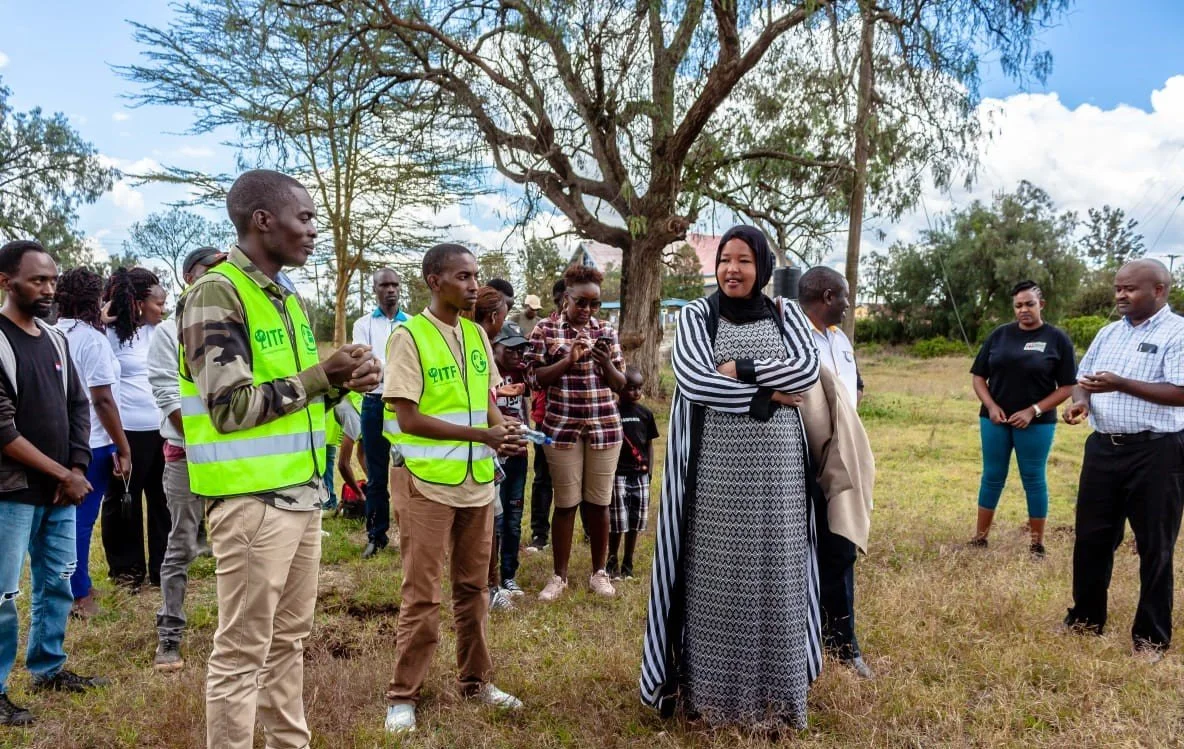People and trees coexisting for a sustainable future: ITF's impact in 2019
For nearly 100 years, ITF has been evolving
Our structure and the projects we deliver have changed to meet different needs and circumstances. All the while drawing on lessons learned from the best available knowledge. What remains unchanged since our founding by Richard St. Barbe Baker and Josiah Njonjo in 1922, is our ethos: positioning communities at the centre of all reforestation, conservation and development efforts. Time and again, our approach is proving effective and sustainable.
This month we publish our Impact Report, showing what your support helped our partners to achieve in 2019. For example, in Kenya, ITF partners planted over 293,847 trees in forests, on farms and school grounds. More than in 2018. This is good news, but growing trees alone is rarely enough.
We coexist
People and trees coexist, in a landscape. This means that our projects range from tree planting to natural regeneration, agroforestry, education programmes, habitat conservation and community empowerment. It all depends upon what the community needs and circumstances.
For example, the Forest of Hope Association (FHA) project is contributing to the protection of a vast region in the west of Rwanda called the Gishwati-Mukara National Park. Over twenty years, this park was subject to severe deforestation. Now, there is a risk that farmers who settle in the newly cleared areas go on to clear the remaining patches of biodiverse forest. FHA will plant a buffer zone of both indigenous and agroforestry trees along the southern edge of the Gishwati Forest, for use by the local Batwa community who were evicted from the forest. These trees will provide the Batwa community with the foods and medicines they would otherwise need to harvest from the protected forest, thereby improving their livelihoods as well as restoring the biodiversity and soil quality of the area.
And in the UK, we ran a Wellbeing in the Woods programme, involving eleven sessions and one exhibition led by participants. The purpose of this programme, was to create time and space for vulnerable young people to connect with nature and learn woodcraft skills, including how to use a pole lathe, coppicing, tree thinning, stool making, and nature photography. Engaging this hard-to-reach group is difficult. For those who attended, retention across the sessions was high, and participants found involvement rewarding. As Keiran, one of the participants said:
“There is something special about being in the woods – people are happier the more they are in nature. Your body needs it and your mind needs it too. Wellbeing in the Woods made a massive difference to me.”
Our impact
Trying to understand the impact of this rich and varied portfolio, now dispersed across the UK and nine African countries, is challenging. Monitoring, evaluation and learning are a key responsibility for ITF, and one in which our partners play a central role. I invite you to read our Impact Report for 2019. Last year, we planted over half a million trees. Our partners protected or restored over 37,000 hectares, and 3,000 people saw their income increase as a result of your support. The ultimate measure of our work, however, is to be found in stories of personal transformation, empowered communities, and how different people in diverse contexts are finding sustainable ways to relate to nature.
Over 2020, we will share more and more stories of people doing this – showing that we can create a world where trees and forests flourish, and where their vital role in supporting planetary and human wellbeing is valued and realised.
Donate Today
Support communities on the front lines of the climate crisis to plant trees, restore ecosystems and improve their livelihoods.


